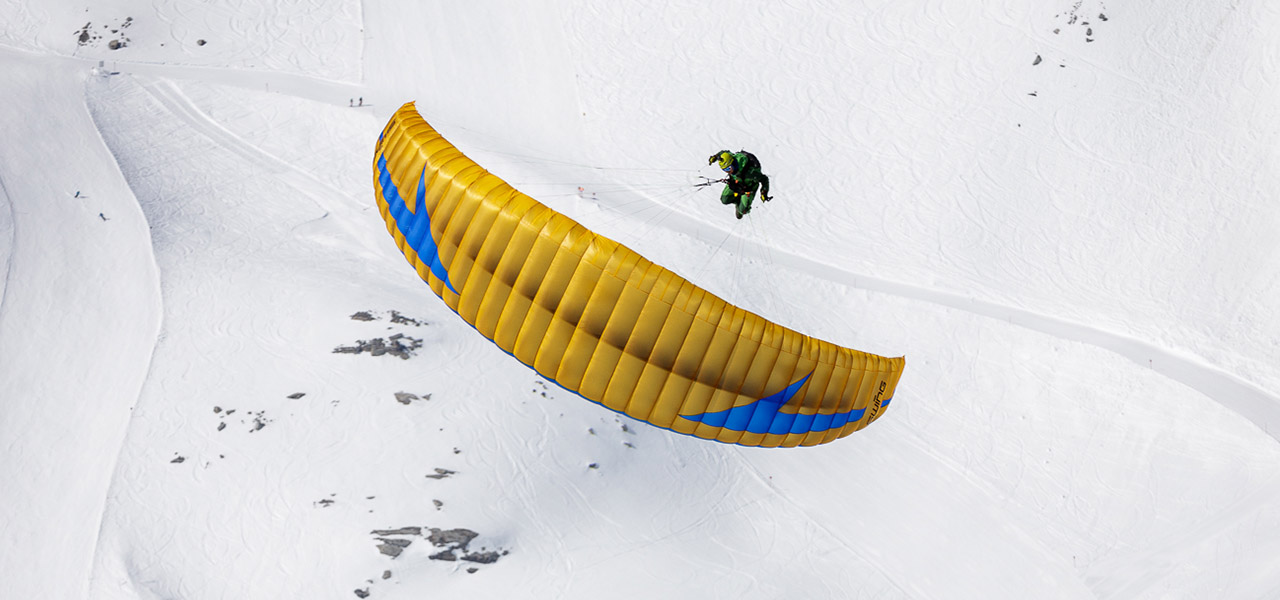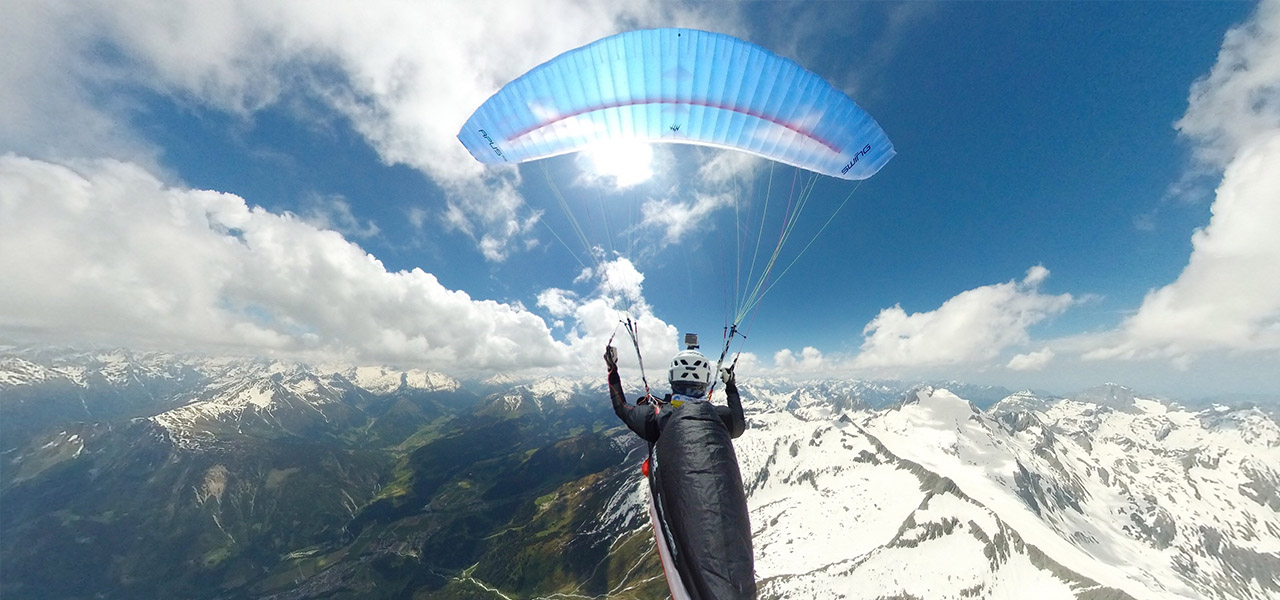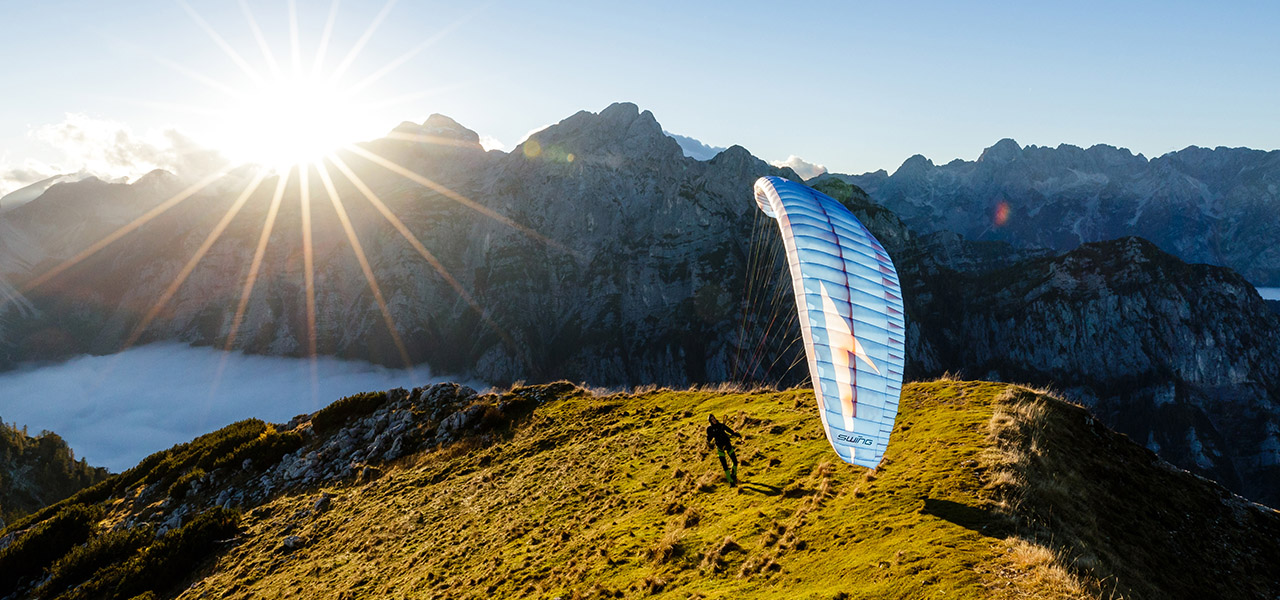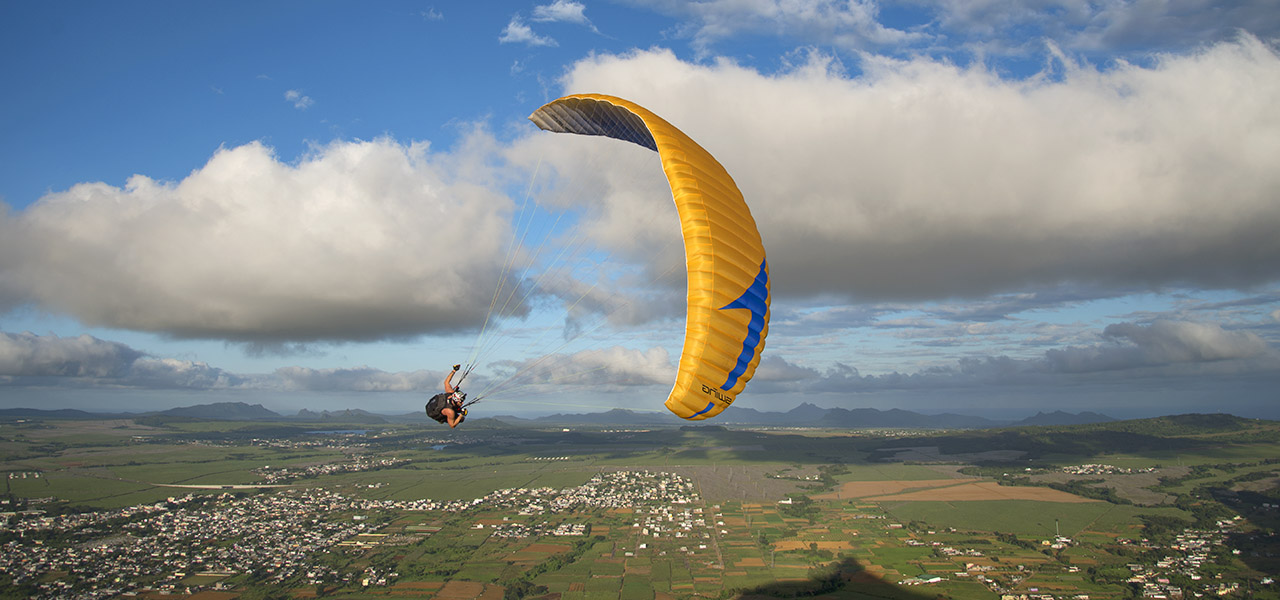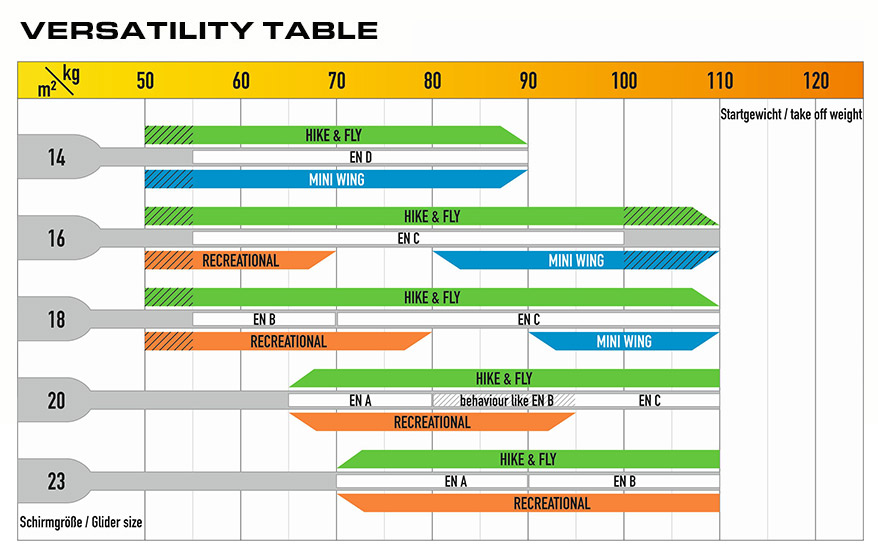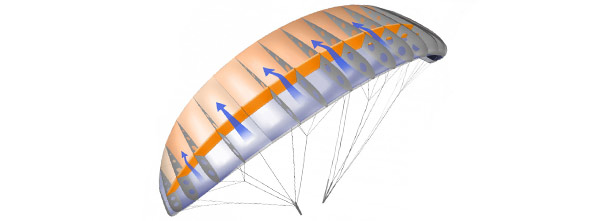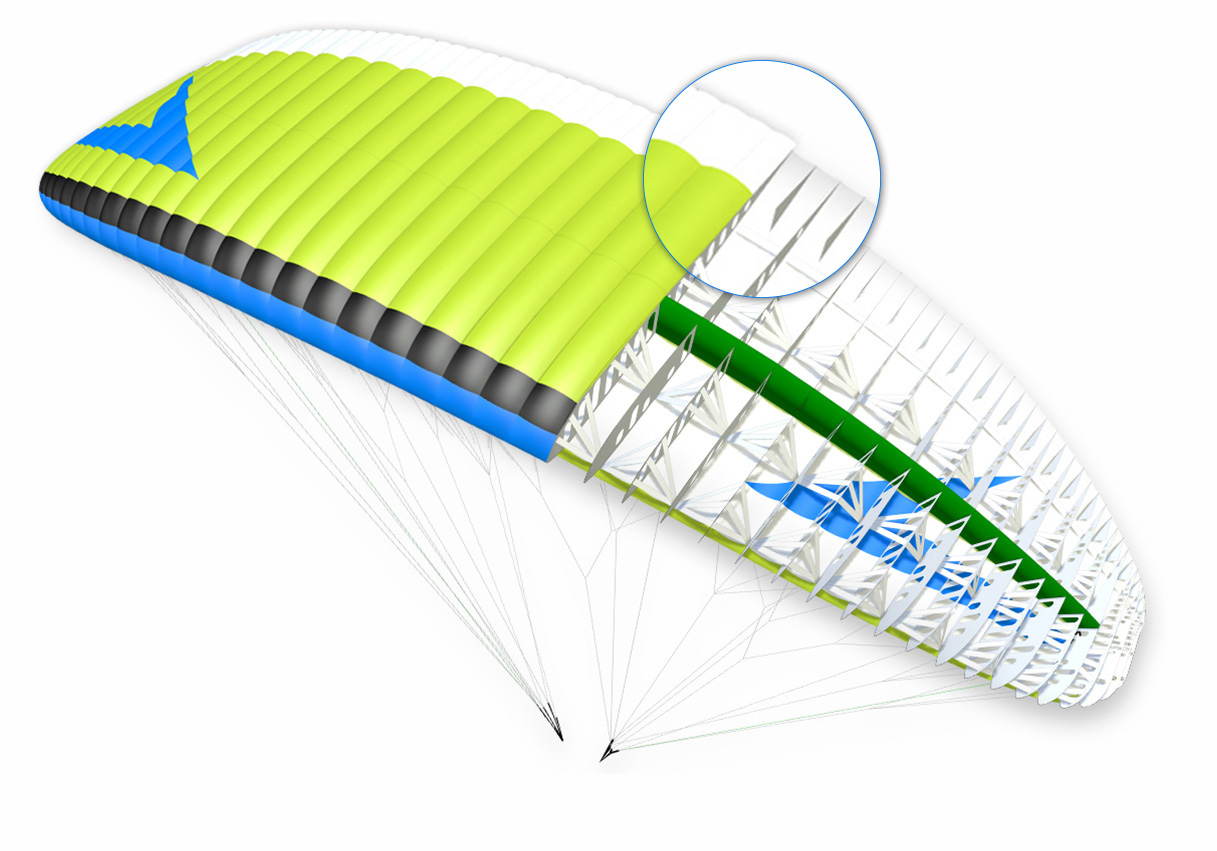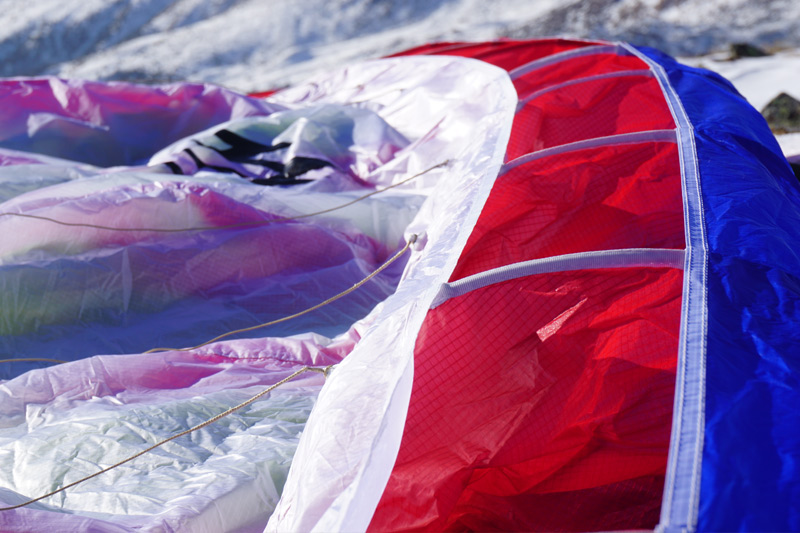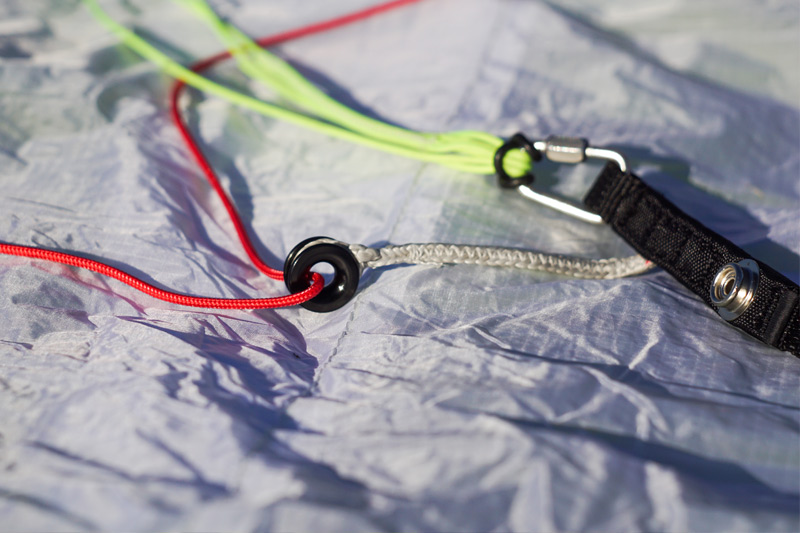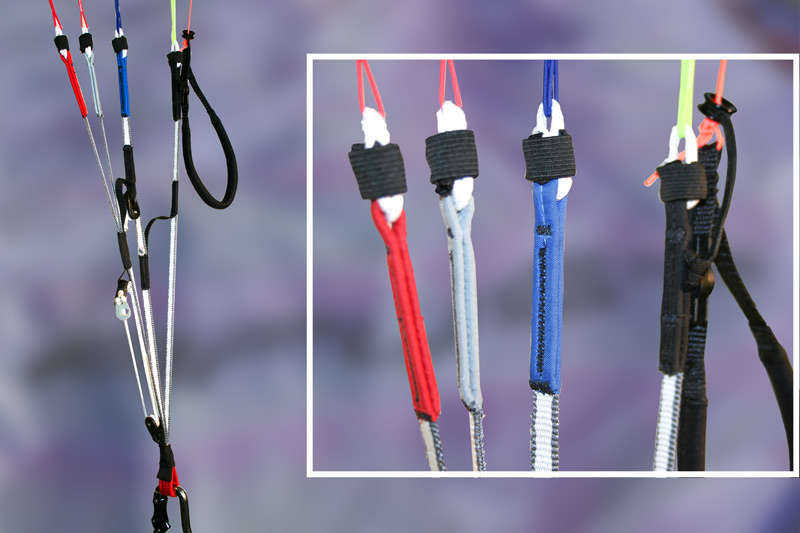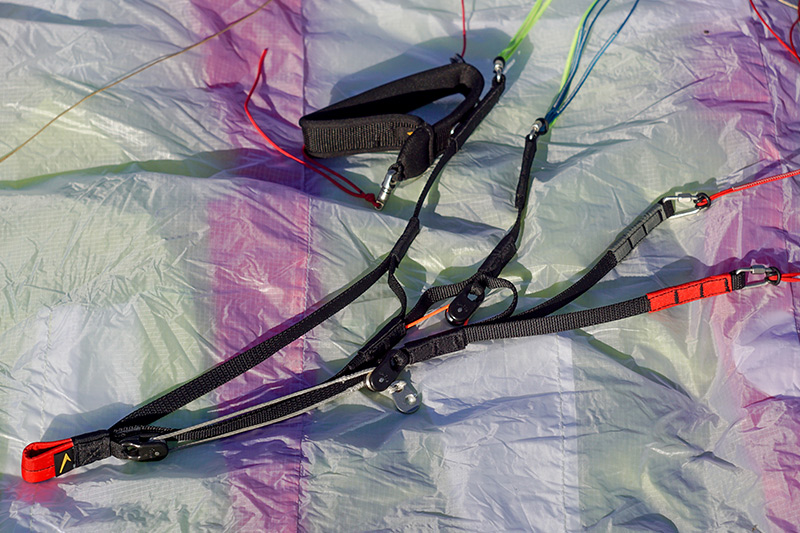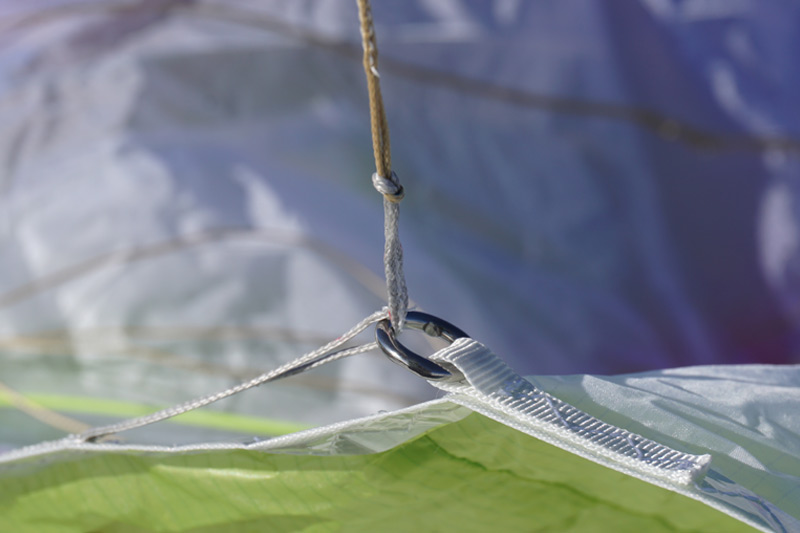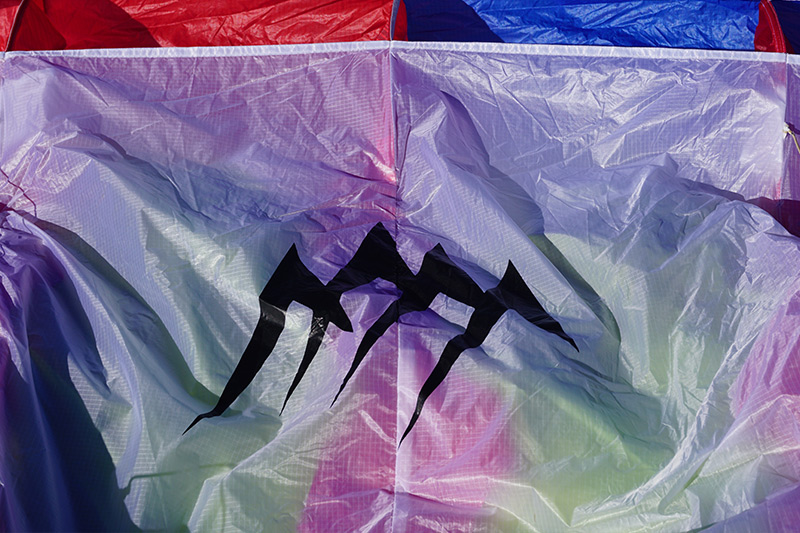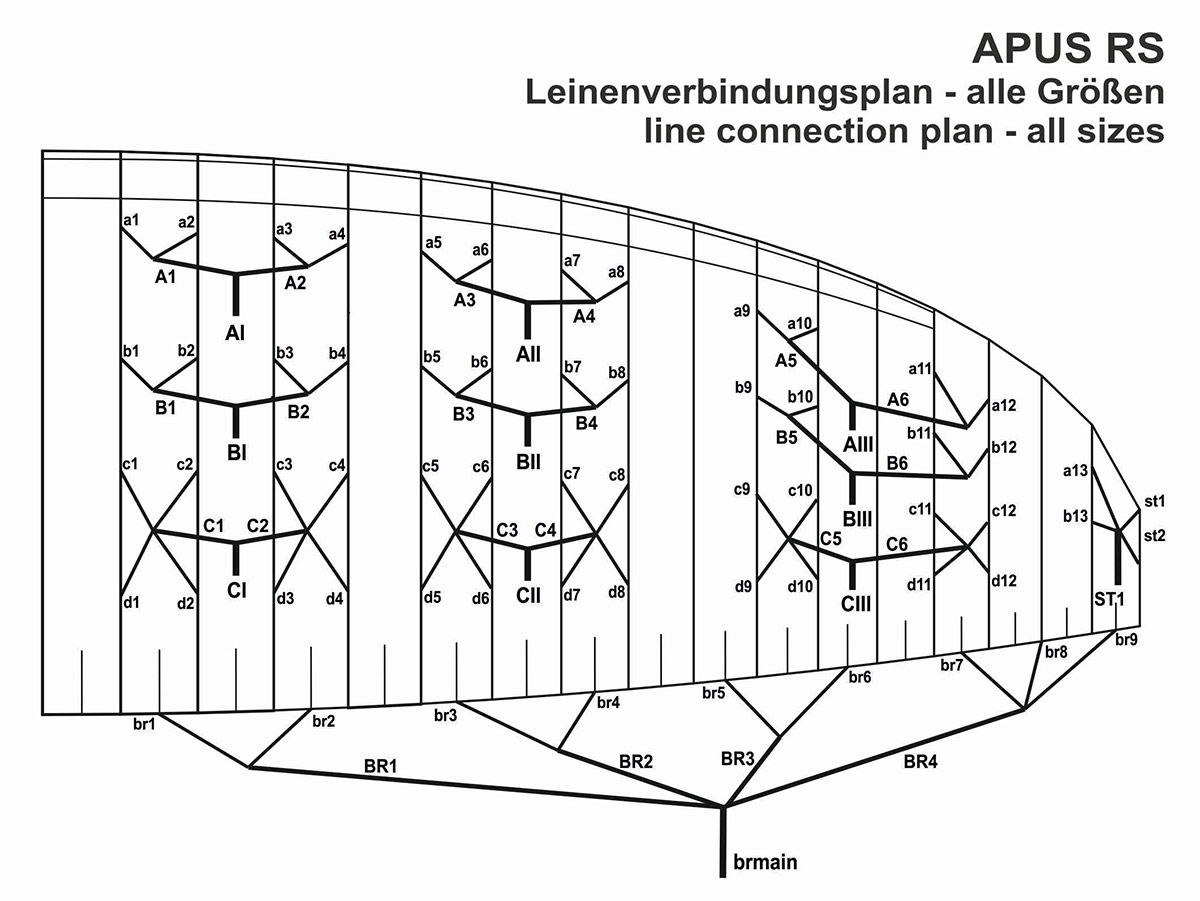APUS RS
…heading for adventure!
The APUS RS is an all-terrain miniwing and the universal tool for guaranteed fun for practically any occasion.
Depending on the version (APUS RS or APUS RS Hike), it has a number of uses ranging from soaring in strong winds to dynamic flying at your local site, right through to Hike & Fly tours. What’s more, it will fit perfectly in your luggage thanks to its packed size and light weight.
This means the APUS RS is intended for all paraglider pilots and keen miniwing pilots, for whom the desire for adventure and a passion for flying have top priority.
The APUS RS is available in standard and hike versions. The design of the hike version has been weight-optimised even further. The APUS RS Hike uses a 27g material throughout for the top and bottom surfaces, instead of the combination of 41 and 34g paraglider fabric. Furthermore, extremely lightweight Dyneema risers with soft links are used rather than conventional risers. The 27g fabric has limited availability, so the APUS RS Hike is available only in the red/blue colour combination. Special colours can be ordered only for the standard version.
Apus RS Hike 20 and 23
In response to strong demand, we have added to the Apus RS Hike product range with sizes 20 and 23.
These make the link from the miniwing to the thermalling wing, with projected area of 20 / 23m², a weight of only 3.4 / 3.6kg and a weight range of 95 / 110kg (EN-B).
As with the smaller sizes, you will be impressed by the simplicity of the Apus RS Hike 20 and 23 from launch to landing. Risk-conscious mountaineers will appreciate this after a strenuous ascent just as much as hike & fly novices. At the same time, the new sizes are much more than simply a descent method: they cover every eventuality to give you the perfect adventure, from extended thermal flights to dynamic soaring and right through to XC bivvy flying!
Here too the innovative RAST concept provides greater safety and performance, particularly in turbulent conditions off the beaten track.
Who should fly the Apus RS?
The APUS RS is designed for all Paraglider pilots and passionate Miniwing pilots, for whom the desire for adventure and the passion for flying are in the focus. From long thermal flights to dynamic soaring and XC bivouac flights, the APUS RS offers you all the possibilities for your perfect adventure! The innovative RAST concept is also the key for more safety and performance, especially in turbulent conditions off the beaten track.
FEATURES
DETAIL PHOTOS
TESTIMONIALS
It is a strange niche that this wing seems to fit into and based on the written specs it doesn’t really
stand out. For me though, it has hit a really sweet compromise that makes it incredibly versatile. I
struggle to think of another wing that manages this whilst being so fun? I don’t imagine I’ll be doing
big XC flights with it, but it has opened a realm of new adventures/conditions for me, and my mind is
always wondering back to it – thinking of what I’ll use it for next. I am lucky to live in a place that allows me to push the potential of the APUS RS Hike and in return it just keeps delivering exactly what I want from it, with no disappointment.
Reto Reiser flog mit seinem APUS RS 14 am 19.06.2019 sagenhafte 153km weit durch die Schweizer Alpen! Dabei konnte er die Leistungsfähigkeit des APUS RS eindrucksvoll aufzeigen.
der Flug auf XContest.org
My choice was a brand new Swing Apus RS 18. It was clear that this wing combines good speed, flight characteristics and safety (20 sq.m, a.r.-5.0, RAST)
TRAVELSTORIES
COLORS
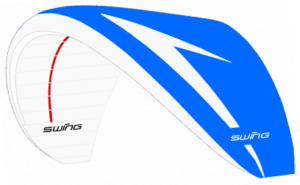
APUS RS HIKE Blue
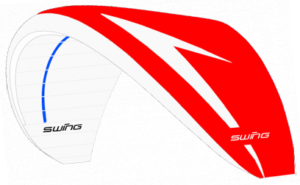
APUS RS HIKE Red
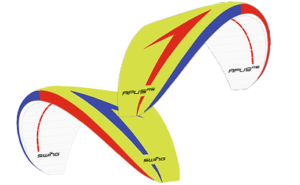
Flash
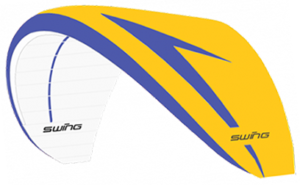
Gold
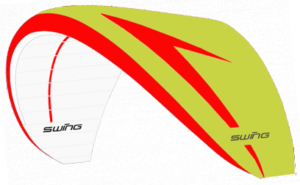
Lime
| Apus RS | 14 | 16 | 18 | 20 | 23 |
|---|---|---|---|---|---|
| CEN homologation | D (☍ DE) (☍ EN) | C (☍ DE) (☍ EN) | B/C (☍ DE) (☍ EN) | A/C (☍ DE) (☍ EN) | A/B (☍ DE) (☍ EN) |
| Recommended weight range (kg) Min/Max inkl. Equipment | 55-90 | 55-100 | 55-70 (EN B) 70-110 (EN C) | 65-80 (EN A) 80-105 (EN C) | 70-90 (EN A) 90-110 (EN B) |
| Cells | 34 | 34 | 34 | 34 | 34 |
| Wing area (m²) | 16 | 18 | 20 | 23 | 26 |
| Wing area projected (m²) | 13,87 | 15,60 | 17,34 | 19,9 | 22,5 |
| Wing span (m) | 8,94 | 9,48 | 10 | 10,7 | 11,4 |
| Projected wing span (m) | 7,26 | 7,7 | 8,11 | 8,7 | 9,3 |
| Aspect ratio | 5 | 5 | 5 | 5 | 5 |
| Projected aspect ratio | 3,8 | 3,8 | 3,8 | 3,8 | 3,8 |
| Glider weight (kg) APUS RS / Hike | 3,14 / 2,60 | 3,50 / 2,85 | 3,74 / 2,99 | -/3,40 | -/3,55 |
* APUS RS HIKE
**The performance data depend on the wing loading, the atmospheric conditions and the harness used, as well as the pilot position
| APUS RS | DE | EN | FR | ES |
|---|---|---|---|---|
| Brochure / Flyer | — | — | — | |
| Manual | — | — | ||
| Maintenance and Service Book | — | — | — | — |
| Inspection information | — | — | — | — |
| Test reports | APUS RS 14 APUS RS 16 APUS RS 18 |
APUS RS 16 APUS RS 18 |
— | — |
- Swing APUS RS
- Compression Strap
- Manual
Trimmer risers for the Apus RS
……and the Apus RS ‘swift’ goes even further!
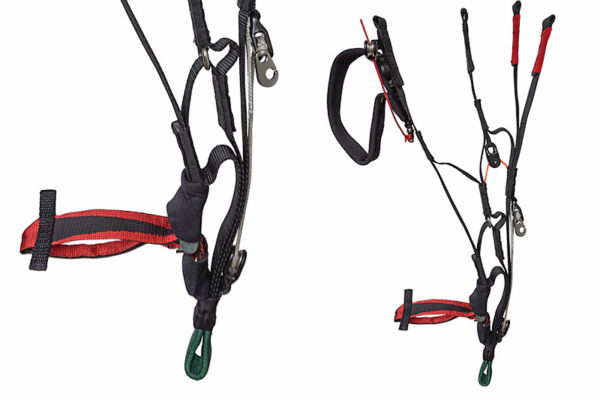
With the optionally available trimmer risers, the already high trim speed of the Apus RS can be increased by another approx. 6km/h.
In coastal soaring, this is especially helpful during takeoff to get away from the compression at the soaring edge in strong winds. Thanks to RAST, the Apus RS remains very stable and controllable even with open trimmers.
The sewn T-handle allows the trimmer to be grabbed and closed quickly and securely when needed.
The non-certified trimmer riser can only be ordered as an optional accessory for 189,- Euro gross (119,- Euro in combination with Apus RS order) incl. line buckles and must be ordered additionally. In case of a possible resale, it can thus be changed back to the variant with certification.


